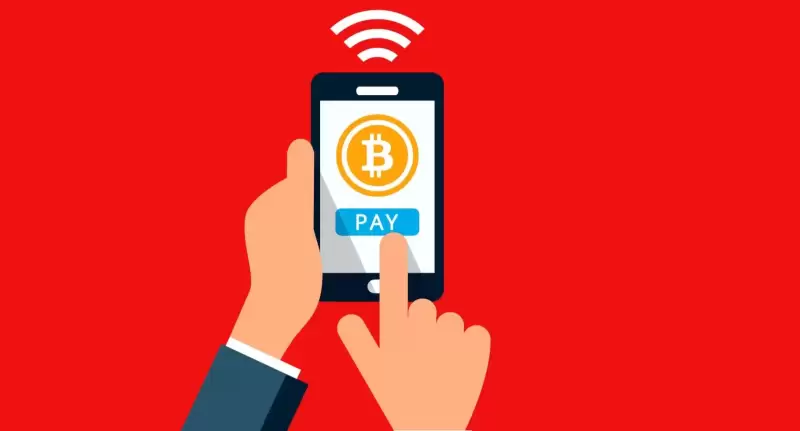 |
|
 |
|
 |
|
 |
|
 |
|
 |
|
 |
|
 |
|
 |
|
 |
|
 |
|
 |
|
 |
|
 |
|
 |
|
Cryptocurrency News Articles
Debunking the Myth: Is a Coin Flip Really 50/50?
Apr 19, 2025 at 05:14 pm
Flipping a coin feels like the ultimate in fairness — a simple, unbiased decision-making mechanism based on pure randomness.

Flipping a coin feels like the ultimate in fairness—a simple, unbiased decision-making mechanism based on pure randomness. However, a closer look at the coin toss, which we assume is 50/50, warrants a critical and in-depth analysis.
With an increasing number of people looking to flip a coin online for instant decisions, getting to the bottom of the complex dynamics that surround flipping a coin could not be more topical. Digital tools offer instant randomness, but are they truly perfect? Let’s explore the physics, psychology, and modern adaptations of the coin toss to find out.
The Physics Behind a Traditional Coin Flip
At first glance, flipping a coin appears straightforward: toss it into the air, let it spin, and await its landing. However, the reality is that multiple variables influence the outcome:
* Initial angular momentum and velocity.
* Air resistance and turbulence during flight.
* Surface material and hardness on which the coin lands.
* Unpredictable micro-movements and vibrations.
Studies, including the seminal work by Diaconis, Holmes, and Montgomery, have shown that coin flips are not entirely random. The researchers demonstrated that with practice and consistency, a flipper could bias the outcome significantly—potentially achieving a 51% chance of landing on a preferred side. Thus, while the ideal theoretical probability of a fair flip is 50/50, real-world coin flips often deviate from perfect randomness.
Additionally, tools like the Google flip a coin feature attempt to replicate the fairness of a physical toss digitally. While algorithmic randomness is robust for casual use, understanding its slight imperfections is essential for those seeking absolute fairness in decision-making.
Human Bias and the “Same-Side” Tendency
Adding another layer to the discussion, psychological research has revealed that when people flip coins, a “same-side bias” often emerges. When flipping a coin with heads up, it is slightly more likely to land heads up again.
This slight bias, around 51% to 52%, stems from the fact that people tend to impart consistent motion unknowingly—favoring the starting side. Although imperceptible during casual use, in scenarios where fairness is paramount (e.g., gambling, sports), this bias could have significant consequences.
What About Bouncing? The Impact of Surface and Coin Design
Surface material plays a critical but often overlooked role. Coins landing on a soft surface (like grass or carpet) are more likely to stay in the initial orientation they hit with, reducing randomness. Conversely, hard surfaces (like wood or metal) can introduce unpredictable bouncing, making the result less dependent on the initial spin.
Coin design also matters:
* Coins with raised edges are less affected by slight landings than coins with flat edges.
* Lighter coins are more sensitive to air currents, introducing more variability.
In short, the “flip” is only part of the story. How the coin travels through the air and interacts with the environment determines the final outcome, making a pure 50/50 proposition even less certain.
Digital Coin Flipping: Can You Trust Flip a Coin Online Tools?
The rise of digital decision-making has led many to flip a coin online rather than reaching for a physical coin. Popular tools, including the Google flip a coin feature, have become staples for instant decisions.
But can you trust them?
Digital coin flips rely on random number generators (RNGs). Ideally, these RNGs are based on algorithms that approximate randomness through complex mathematical formulas. However, unless a tool uses a true random number generator (TRNG) based on atmospheric noise or radioactive decay, slight patterns may exist in algorithmic random number generation.
While for everyday use, the Google flip a coin feature provides results close enough to random, in high-stakes environments (e.g., cryptography), algorithm-based randomness would not be deemed truly secure.
In essence, while flipping a coin online is generally fair enough for casual decisions, discerning users must understand that “random” does not mean “perfectly random” in every case.
Role of Quantum Mechanics in True Randomness
A fascinating frontier emerges when we delve into quantum mechanics. Quantum phenomena are inherently random, and devices based on quantum events can provide truly random outcomes—the holy grail of fairness in decision-making.
Some advanced flip a coin online services now claim to use quantum randomness by tapping into quantum random number generators (QRNGs). These devices rely on phenomena like photon emission, ensuring that outcomes are fundamentally unpredictable by any algorithmic pattern.
If absolute fairness matters, seeking out a quantum-based flip service offers the best approximation of a truly 50/50 coin flip.
Historical Coin Flips That Changed the Course of History
The seemingly trivial act of flipping a coin has played pivotal roles in history:
* In 1493, during the Age of Discovery, a coin flip decided the fate of newly discovered
Disclaimer:info@kdj.com
The information provided is not trading advice. kdj.com does not assume any responsibility for any investments made based on the information provided in this article. Cryptocurrencies are highly volatile and it is highly recommended that you invest with caution after thorough research!
If you believe that the content used on this website infringes your copyright, please contact us immediately (info@kdj.com) and we will delete it promptly.
-

-

- Charles Schwab Corp CEO Rick Wurster is reportedly eyeing an April 2026 launch window to provide spot Bitcoin (BTC) trading services to Schwab clients.
- Apr 20, 2025 at 05:00 am
- According to RIABiz, Wurster cited a 400% increase in traffic to Schwab's crypto website as evidence of investor interest in digital assets.
-

-

-

- DOGE & SHIB Slow Down, But BlockDAG's 2,380% Surge Could Make It the Best Crypto to Buy Right Now
- Apr 20, 2025 at 04:55 am
- As market attention shifts, two popular meme coins are showing signs of stalling. The Dogecoin (DOGE) price remains stuck under recent highs, and Shiba Inu (SHIB) price analysis suggests that resistance is keeping its rally in check.
-

-

-

- Expect CHILLGUY and GOAT-Like Success as BTFD Speeds Toward Its Presale Deadline—Top New Meme Coins to Buy This Week
- Apr 20, 2025 at 04:45 am
- The meme coin mania isn’t slowing down anytime soon! With new players entering the game and old legends still holding strong, now is the perfect time to catch the next wave of crypto madness.
-



























































